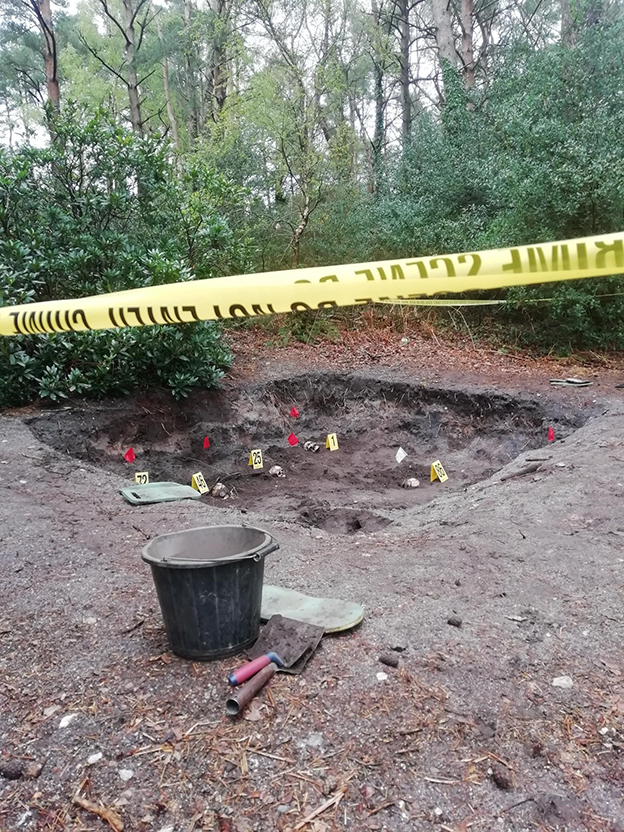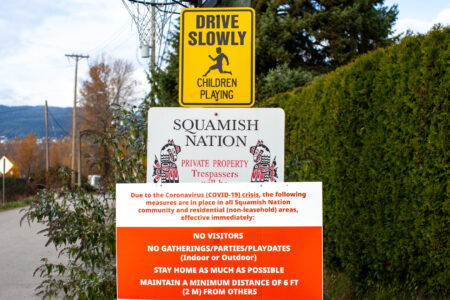
Mass graves are a worldwide phenomenon that exists on a shocking scale, but they are usually identified with conflict and gross human rights violations, typically in countries ravaged by poverty and inequality. Yet the discovery of the unmarked graves of 215 children in Kamloops, British Columbia has made global headlines, triggering a variety of emotions, reactions and questions.
Amidst the outpouring of grief and mourning, there are calls for prompt and thorough investigations into the shocking legacy of government-funded residential schools that operated for more than a century and were designed to systematically assimilate Indigenous children and destroy Indigenous cultures and languages.
But there is also the immediate question of how best to protect and deal with the discovered graves and the human remains at the site of the former Kamloops Indian Residential School. Mass graves contain evidence that is essential to the realization of truth, justice and accountability goals for victims and their families, the affected communities – in the present case represented by Tk’emlúps te Secwépemc First Nation – but also the National Centre for Truth and Reconciliation and, generally, the government of Canada.
Overarching principles for protection and investigation efforts
Although mass graves vary enormously, the consequences of not protecting and investigating mass graves are significant. Relatives continue to suffer because they do not know what happened to their loved ones (in itself a form of inhumane and degrading treatment), and evidence essential to identification, documentation and, where relevant, prosecution efforts may be contaminated, disturbed or lost. The careful, considerate, culturally appropriate yet legally compliant and scientifically robust protection and investigation of mass graves is therefore paramount, and has been the subject of significant research and deliberation, as evidenced by the 2020 publication of the Bournemouth Protocol on Mass Grave Protection and Investigation (also available in French).
As further details and information emerge on the discovery in Kamloops, it seems apt to reflect on the overarching principles that ought to apply during grave protection and investigation efforts in this particular context.
From the outset, the complexity of mass grave investigations should not be underestimated. Such investigations are lengthy and expensive processes, requiring significant planning, co-ordination, resources, official authorization and, at times, political will. All this means that there will be a wide range of individual, collective and societal interests and needs that must be considered but may not all be compatible or readily reconcilable. In addition – and this may sound distressing – in situations of significant scale or absence of the relevant data from relatives, it may not be possible to identify and return all victims from a mass grave. It is therefore vital that, despite the inevitable pressure of a highly charged emotional context, expectations are carefully managed.

A do no harm approach in these circumstances will actively seek to avoid undermining existing structures and relationships that are essential for community cohesion. It is important to avoid creating inequalities or perceptions of bias or to entrench existing inequalities. It will include a clear respect for and, where possible, adherence to cultural sensitivities, beliefs and norms of victims and/or their families to the extent they do not adversely affect the achievement of an effective investigation.
The physical and emotional safety of all involved, the relatives and the investigation team alike, are paramount. In the context of mass graves, safety, dignity, privacy and well-being of victims and their families should be a key concern for all actors without distinction. While the actual grave may have been created decades ago when the Kamloops Indian Residential School was in operation, initiatives to support physical and psychological safety should be in place.
Investigations must be independent and impartial
That an investigation should be independent and impartial is a rather obvious point to make. And yet, since the investigation will relate to an era of systematic state-instigated discrimination, it is poignant and relevant: without a non-discriminatory and impartial approach to the grave protection and investigation process, the legitimacy of the work may be questioned by the affected community. To enhance public trust, investigations must be independent and impartial and must be seen to be so.
For mass grave investigations to result in identification, it will be critical to acquire personal details and other identifying data, and confidentiality, consistent with national legislation, has to be assured. Investigative processes often entail the need for data sharing but any data sharing should be limited only to those individuals and bodies necessary to ensure the achievement of the objectives of the exhumation process and to the extent agreed by the individuals concerned. Similarly, at all stages of the process (the preliminary investigation, the actual excavation, identification and return of human remains) transparency of processes is key.
Clear and ongoing communication will help provide the platform for transparency. Communication strategies should ideally envisage and accommodate a two-way flow of information between the investigative team and the families, and incorporate regular updates.
Commitments to families must be kept
Finally, all parties involved in the protection and investigation of the mass grave should avoid making commitments to families that they may be unable to keep.
In addition to these overarching principles that ought to apply to all phases of mass grave protection and investigation, careful planning for the actual physical investigation is essential. Meticulous planning, particularly in relation to the actual excavation is critical for all subsequent phases of the process, including identification efforts, return of human remains and continued community liaison.
But in the long term beyond the investigative phase, there are also justice and commemorative aspects to consider from a policy perspective. Alongside potential accountability processes and claims for remedies, a further question arises: What will happen to the original site at the school? An excavated mass grave may become a memorial site in its own right, deserving of that recognition and potentially long-term legal protection. Conversely, a newly created burial site or place for commemoration will hold great significance for individual and/or collective commemoration and may also constitute a form of reparation.
Mass graves are a stark reminder of recent history and memory; they may form part of educational materials and national discourse on the past; they may also become a site for community support. These graves in particular may symbolize the start of more searches into unknown graves and resting places. As reported in the media, many more children died in residential schools with few bodies returned home.
Co-ordination and collaboration required
Since it is predicted that more such graves are to be found, their resolution and investigation will require the co-ordination and collaboration of a multitude of experts to implement early protection measures, facilitate, where possible, the investigation and exhumation of the grave for identification purposes and the return of human remains to family members. All this, in turn, must be overseen by relevant authorities, with due regard for the applicable law.
If there is suspicion of more such graves, the establishment of a mass grave management role or office that assumes overall responsibility for the operational management of mass graves including adherence to standard operating procedures; maintenance of community liaison, health, safety and well-being on-site; implementation of reporting structures and communication strategy; and co-ordination of the identification and return of human remains process might be beneficial.
In short, mass graves are incredibly complex features placing investigative duties on the state. This in turn requires extensive practitioner engagement, resources and careful consideration of individual and societal needs to ultimately advance their rights to truth and justice.









